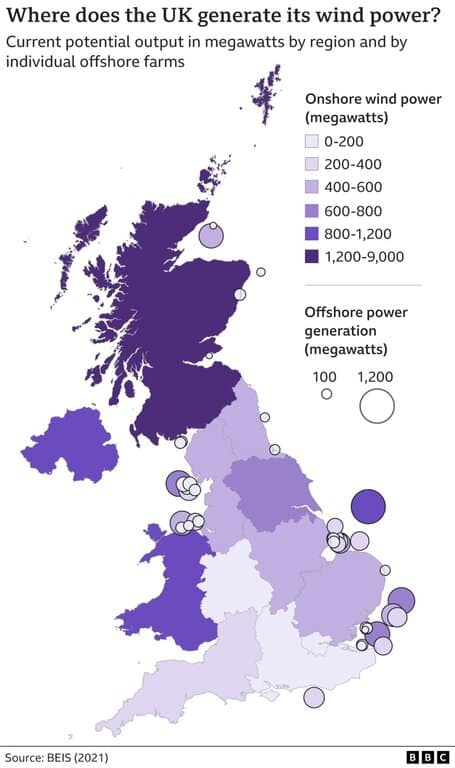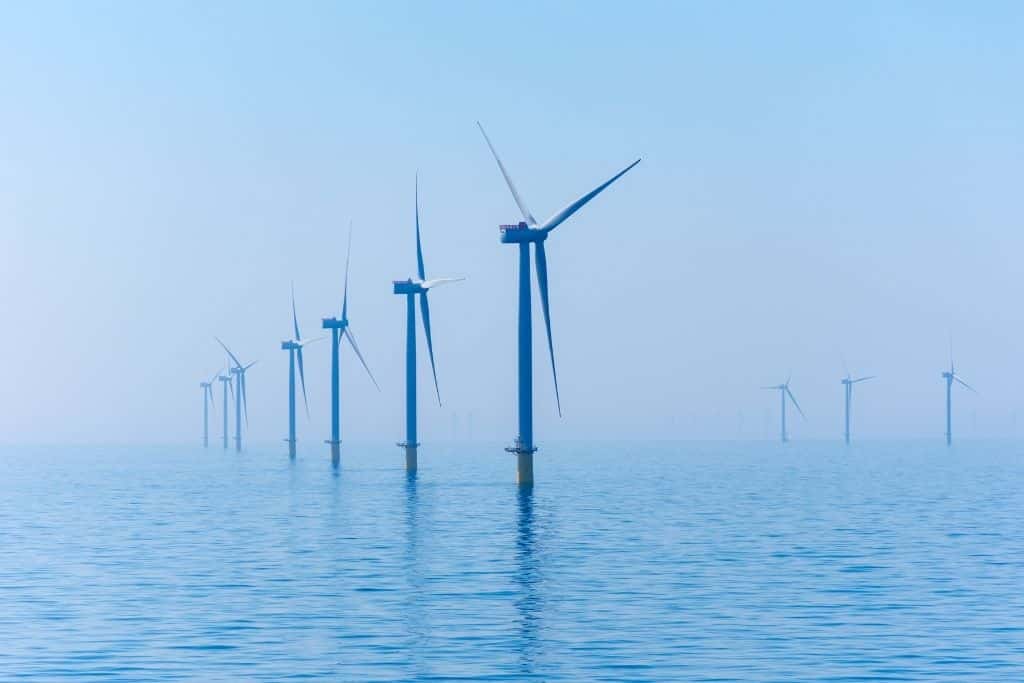Wind power currently makes up one-third of the UK’s electricity demand. On Thursday, the National Grid unveiled ambitious plans to upgrade the country’s network and expand offshore wind energy.
—
In what has been described as the biggest investment in nearly six decades, the National Grid has announced a £54 billion project to expand renewable energy in the UK.
In the long-awaited ‘Pathway to 2030’ report released on Thursday, the company set out the “blueprint for the grid infrastructure required to deliver 2030 offshore wind targets and a pathway to net zero emissions”, detailing how offshore wind power infrastructure will be expanded in the coming years.
More than 11,000 on and offshore wind turbines currently account for one-quarter of the UK’s electricity. Now, the government plans to increase offshore wind energy from the current 10 gigawatts to 50GW by 2030 and deliver a new network expected to provide a further 23GW – 24 million homes worth at current power usage. The upgrade could turn wind power into the UK’s largest source of energy, able to cover almost 65% of the demand.

Image: Wind Power in the UK
Besides creating 168,000 jobs, the expansion of local offshore wind energy would also be enough to eliminate dependency on Russian gas imports within two years. The country imports just over 3% of its gas from there, significantly less than other European nations.
Currently, most new offshore wind farms have their own link to the grid, which leads to a proliferation of cable that disrupts coastal communities according to the report detailing the proposals. In a bid to solve this issue as well as reduce the need for infrastructure and the costs associated with it, the National Grid Electricity System Operator – responsible to move electricity around the system and ensuring a balance in supply and demand – has proposed to build a network of connection points to bring electricity to land.
According to previous estimates, the UK would require between 1,000 and 2,00 new wind farms to meet its goal to entirely rely on ‘clean energy sources’ by 2035, a target announced last October by Premier Boris Johnson.
The country has so far been very successful in expanding offshore wind power. According to the International Energy Agency (IEA) – its system currently has the biggest capacity in the world. Now, the unprecedented investment in renewing and reinforcing the country’s critical national infrastructure has the potential to bring the UK a step closer to achieving its target.
You Might Also Like: Why Offshore Wind Is So Hot Right Now


















